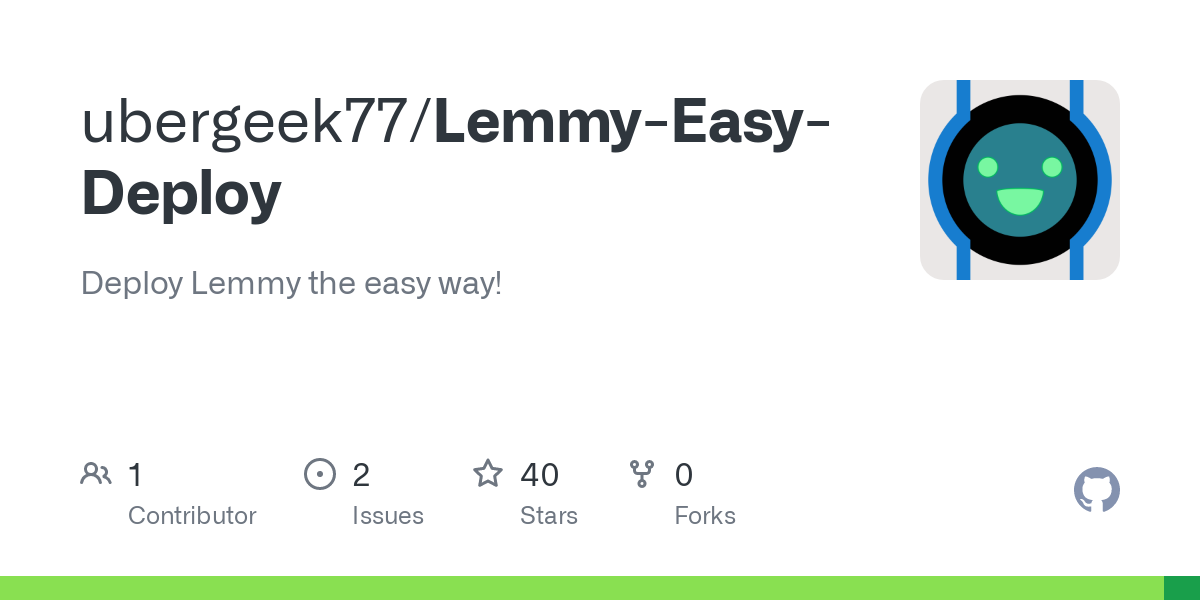- cross-posted to:
- [email protected]
- [email protected]
- cross-posted to:
- [email protected]
- [email protected]
In the past few days, I’ve seen a number of people having trouble getting Lemmy set up on their own servers. That motivated me to create Lemmy-Easy-Deploy, a dead-simple solution to deploying Lemmy using Docker Compose under the hood.
To accommodate people new to Docker or self hosting, I’ve made it as simple as I possibly could. Edit the config file to specify your domain, then run the script. That’s it! No manual configuration is needed. Your self hosted Lemmy instance will be up and running in about a minute or less. Everything is taken care of for you. Random passwords are created for Lemmy’s microservices, and HTTPS is handled automatically by Caddy.
Updates are automatic too! Run the script again to detect and deploy updates to Lemmy automatically.
If you are an advanced user, plenty of config options are available. You can set this to compile Lemmy from source if you want, which is useful for trying out Release Candidate versions. You can also specify a Cloudflare API token, and if you do, HTTPS certificates will use the DNS challenge instead. This is helpful for Cloudflare proxy users, who can have issues with HTTPS certificates sometimes.
Try it out and let me know what you think!



Wait, so pardon my noobism, but does this mean you need to federate with communities manually? Don’t instances start out as already being federated with everything?
Yep. It’s all manual. There are hundreds of Lemmy instances out there, new instances have no way of discovering any of them unless you tell it how.
Federation with a community only has to happen once. After it’s connected, the instance will always receive new data and posts from that point forward. That is why the major public instances always have posts from a wide variety of instances.
But, only a single person needs to do the federation, it doesn’t have to be done by an admin. After the connection is made with a community, content from that community will start showing up on “All” for that instance for everyone.
Oh, okay, fair. So this means that the search for new communities to browse/federate with is less troublesome, the more users populate an instance. On the flip side, if I’m considering self-hosting as one single user, I should anticipate:
Is this correct?